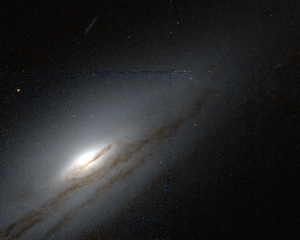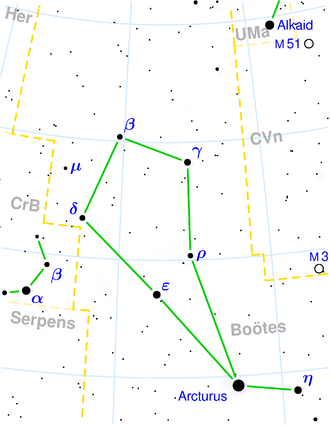NGC 5689
| Galaxy NGC 5689 |
|
|---|---|

|
|
| Image of the spiral galaxy NGC 5689 with the Hubble Space Telescope | |
| AladinLite | |
| Constellation | Bear keeper |
|
Position equinox : J2000.0 , epoch : J2000.0 |
|
| Right ascension | 14 h 35 m 29.7 s |
| declination | + 48 ° 44 ′ 30 ″ |
| Appearance | |
| Morphological type | SB (s) 0 / a |
| Brightness (visual) | 11.9 likes |
| Brightness (B-band) | 12.8 mag |
| Angular expansion | 3 ′, 3 × 1 ′, 0 |
| Position angle | 85 ° |
| Surface brightness | 13.0 mag / arcmin² |
| Physical data | |
| Affiliation | LGG 384 |
| Redshift | 0.007205 ± 0.000033 |
| Radial velocity | 2160 ± 10 km / s |
|
Stroke distance v rad / H 0 |
(102 ± 7) · 10 6 ly (31.2 ± 2.2) Mpc |
| history | |
| discovery | William Herschel |
| Discovery date | May 12, 1787 |
| Catalog names | |
| NGC 5689 • UGC 9399 • PGC 52154 • CGCG 248-010 • MCG + 08-27-004 • IRAS 14337 + 4857 • 2MASX J14352967 + 4844293 • GC 3942 • H I 188 • h 1848 • LDCE 1043 NED015 | |
NGC 5689 , is a lenticular galaxy of the Hubble type SB (s) 0 / a in the constellation Bear Keeper . It is estimated to be 102 million light years from the Milky Way and has a disk diameter of around 95,000 ly.
The object was discovered on May 12, 1787 by the astronomer William Herschel using his 18.7-inch reflector telescope and was later added to his New General Catalog by Johan Dreyer .
